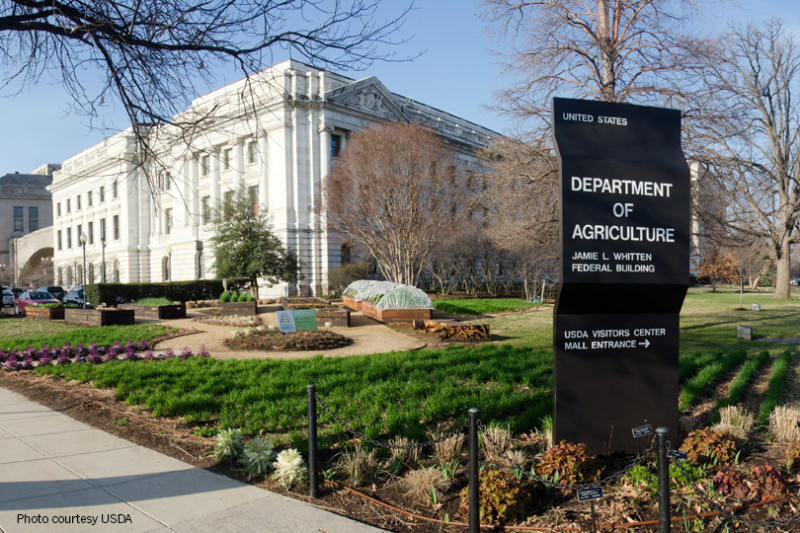By Jennifer Whitlock
Field Editor
The U.S. Department of Agriculture (USDA) announced a new federal initiative today, the Pandemic Assistance for Producers.
Through the program, the agency will distribute $12 billion to assist farmers, ranchers and other agricultural producers impacted by COVID-19 market disruptions.
In the announcement, U.S. Secretary of Agriculture Tom Vilsack said the program will reach more farmers and ranchers than previous COVID-19 aid programs. USDA has dedicated funds for the new program and placed a greater emphasis on reaching small and socially disadvantaged farmers and ranchers, specialty crop and organic farmers and timber harvesters. The program also provides support for the food supply chain and producers of renewable fuel.
Vilsack shared the details of the new plan during a virtual meeting with state Farm Bureau presidents, including Texas Farm Bureau President Russell Boening, and American Farm Bureau Federation leadership.
“The pandemic affected all of agriculture, but many farmers did not benefit from previous rounds of pandemic-related assistance. The Biden-Harris administration is committed to helping as many producers as possible, as equitably as possible,” Vilsack said in a statement. “Our new USDA Pandemic Assistance for Producers initiative will help get financial assistance to a broader set of producers, including to socially disadvantaged communities, small and medium sized producers, and farmers and producers of less traditional crops.”
USDA will use $6 billion to develop new programs or modify existing proposals using remaining discretionary funds from the Consolidated Appropriations Act. Included on the list:
- assistance for dairy farmers will be available through a dairy donation program;
- producers who were forced to euthanize livestock or poultry or grow specialty crops will be eligible for assistance;
- beginning farmers, specialty crop farmers and local, urban and organic farms can apply for assistance, as well as specialty crop and seafood processors and distributors;
- funds can be used for purchasing Personal Protective Equipment and other measures for food and farmworkers;
- biofuels production;
- costs for organic certification or to continue or add conservation activities, were also included in the eligibility for assistance;
- timber harvesting and hauling, which is a major sector of Texas agriculture, is included in this round of funding;
- USDA will also include assistance for other possible expansion and corrections to the Coronavirus Food Assistance Program (CFAP), such as to support dairy or other livestock producers.
Another $5.6 billion will be directed to formula payments to cattle producers and eligible flat-rate or price trigger crops. Producers who are eligible will not need to submit new applications. Included in that funding is
- an increase in CFAP 1 payment rates for cattle, which USDA estimates will result in an additional $1.1 billion in payments beginning in April to more than 410,000 farmers and ranchers;
- additional CFAP 2 assistance of $20 per acre for farmers of eligible flat-rate or price-trigger crops, estimated to be more than $4.5 billion to more than 560,000 farmers;
- and processing eligible payments for CFAP Additional Assistance (CFAP AA).
An additional $500 million of new funding will be added by April 30 to the Specialty Crop Block Grant Program, Farmers Opportunities Training and Outreach Program, Local Agricultural Marketing Program, Gus Schumacher Nutrition Incentive Program, Economic Adjustment Assistance for Textile Mills Program, Animal and Plant Health Inspection Service, Agricultural Research Service and National Institute of Food and Agriculture.
The agency noted additional payments for swine farmers and contract growers under CFAP AA remain on hold and are likely to require modifications to regulations before they can be resumed. However, FSA will continue to accept applications during the ongoing review process.
Sign-up for the new Pandemic Assistance Program will begin April 5.
Sign-up for CFAP 2 will reopen for at least 60 days beginning on April 5, according to the announcement.
Updated and additional information will be available on the Pandemic Assistance Program page.


Does this include beef productions
Small scale 50 60 head opperation